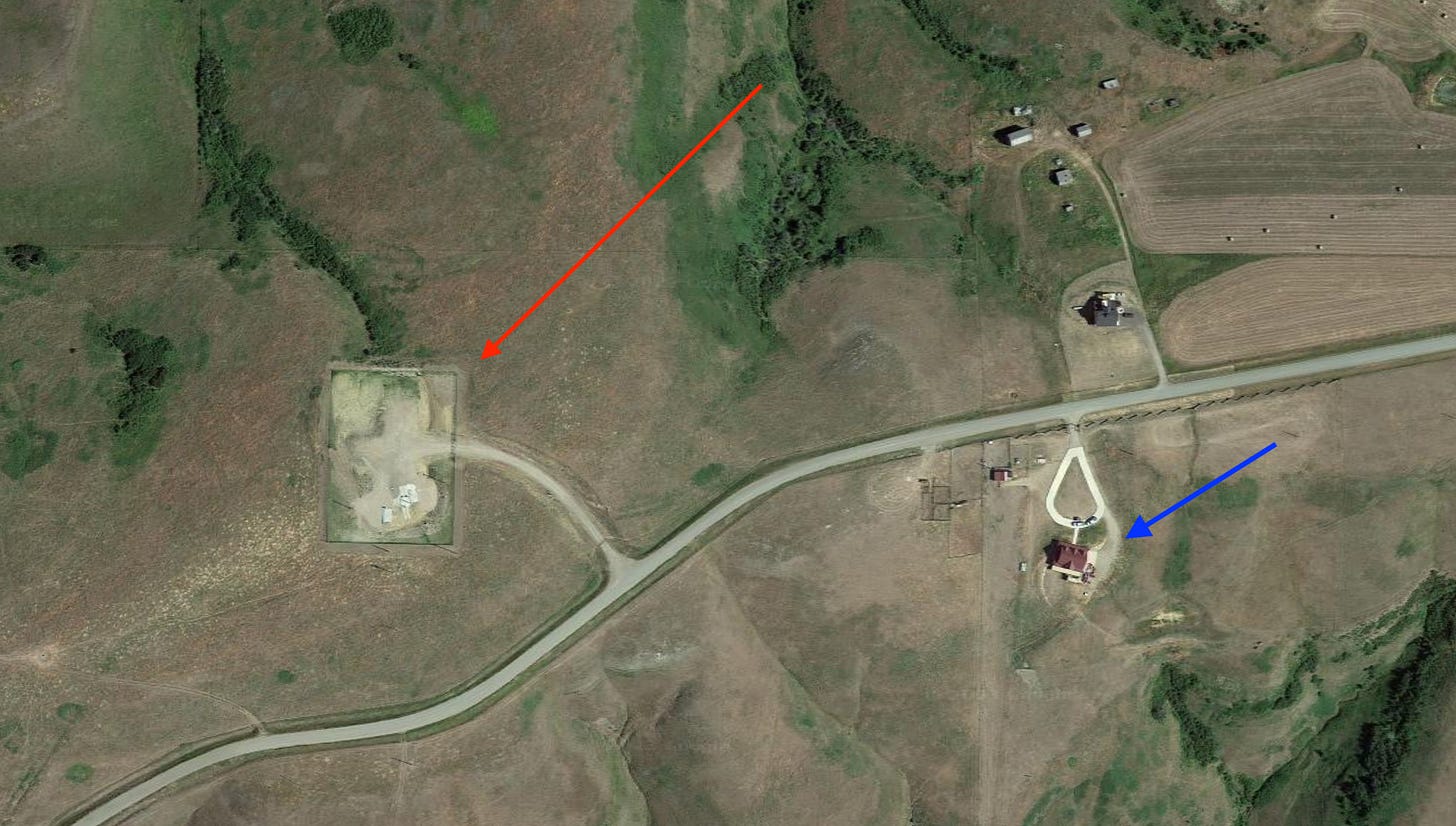Troubles in the Skies: Chinese Spy Balloon, Another Runway Close Call.
Here is what we know so far. The episode that got less press is much more concerning.
Here are two aviation stories that involve more unknowns than knowns. I’ll deal with them Q-and-A style. Starting with the now-defunct Chinese spy balloon.
I. The Chinese Balloon
Q: Do we believe the Chinese government statement that this was just a science-oriented weather mission?
A: No.
Q: Then what could the people who launched it conceivably have been thinking?
A: Who knows. At the moment I can imagine three possibilities, all bad.
-First, this could have been a screwup in the most basic sense. Whoever launched it could have thought the jet-stream winds would keep it over Canada, rather than dipping into the U.S. Of course that would still mean traversing airspace of a NATO member, and of course it would mean crossing Alaska before that.
This possibility is conceivable but not likely.
-Second, this could have been a screwup within the Chinese leadership. Some military hothead might have thought that sending the balloon would be a great way to poke the “declining” Americans, while proving his or her own “fighting spirit” initiative, and also demonstrating China’s technical and military prowess.
There’s a precedent. Back in 2007 it appears that some Chinese military hothead shot down a satellite, without asking the leader at the time, Hu Jintao, about the plan. Maybe this has happened again?
-Third, this could have been a screwup in the grand-strategic sense. Perhaps the all-knowing, all-wise Xi Jinping approved the plans, as a way of demonstrating China’s technical and military prowess, and putting the Americans on guard.
None of these possibilities is great. They don’t represent a Chinese “threat,” as I’ll argue below. But they increase the China “problem.”
For the record, it’s also possible that the whole situation is a giant misunderstanding. Maybe it’s not a Chinese balloon at all? Unlikely, but conceivable. We’ll see.
Q: Did China “lose face” from this episode?
A: Judge for yourself. The U.S. announced it was tracking the balloon. It shot the balloon down as soon as it knew that the payload would fall over the ocean rather than onto inhabited U.S. land—and managed the mission so the payload would end up within relatively shallow “U.S. territorial waters.” The balloon was bumbling along; the F-22s were purposeful and effective.
I don’t know how this is being conveyed within China’s media bubble. But in the rest of the world the media image is of fighter planes zooming up to take out a drifting balloon.
You don’t have to be Tom Cruise to judge the strength-vs-weakness in the optics thereof.
Q: What might the Chinese have hoped to learn from a balloon, that they don’t already know from satellites, and spies, and TikTok?
A: I don’t know. I hope we’ll learn more once the balloon’s payload is fished out of the water and examined.
What the Chinese (or anyone else) would not learn much about is the placement of U.S. nuclear-deterrent forces. That information has been on the public record for decades.
I, personally, have flown a little single-engine plane at 3,500 feet above U.S. nuclear-submarine bases—not 60,000 feet up, like this balloon. I have done this many times, above bases both on the East Coast and on the West.
What I did is perfectly legal. It would have been equally legal for any Chinese citizen who was a passenger or pilot on a helicopter or small plane. The listings are publicly available on any aviation chart.
Below you see a sample. P-50 on this chart points to a major U.S. nuclear-missile submarine base, along the Atlantic coast. This image comes from official FAA charts on my iPad. Any American who cares can find out where the nukes are. Any Chinese spy who doesn’t already know isn’t trying.

As Brian Schweitzer, the former governor of Montana, recently told Jim Robbins of the New York Times, the location of ICBMs across the plains states is hardly a secret:
“I grew up in a little farmhouse a mile from an intercontinental missile,” he said. While the missiles are underground and not visible, Mr. Schweitzer said, you can drive up to the facility and take a photo. “Taking a rental car would be a lot cheaper than sending a balloon from Beijing,”
The exact Lat/Long locations for hundreds of the sites are freely available online. I’ll do my symbolic part for national security by not listing them here. Chinese or Russian spies would have found them many years ago.
Here is a sample image, freely available on Google Earth, of a ‘Little House on the Prairie’ in one of the Plains states. It happens to have a nuclear-warhead ICBM just down the road. The blue arrow points toward the house. The red arrow points to the nuclear missile that could be part of World War III. Anyone can find this, even without a spy balloon
And here is another missile site, a few miles from a small farming community also in the plains.
You can find hundreds of these on Google Earth. Did the balloon tell Chinese officials something the rest of the world didn’t already know? Cell phone signals, or something? Maybe, and we’ll wait for more info.
But the “menace” of flying over missile sites should be at the bottom of Americans’ worry lists.
Q: Was the U.S. ever “in peril” during this flyover?
A: Not from the balloon. Conceivably there is some peril: We don’t know what we don’t know. But on current evidence, this seems like a gigantic screwup on the Chinese side. It reveals simultaneously how far they might be willing to push things, and how bad they might be at doing so. It makes them look simultaneously aggressive and incompetent.
I would not want to be the person who promoted this great idea within the Chinese leadership.
II. The close call in Austin.
Last month I wrote about a close-call “runway incursion” episode at Kennedy Airport, JFK, in New York.
Yesterday what appears to have been a much more dangerous episode happened at the main airport, known as Bergstrom or AUS, in Austin, Texas.
I’ll do this in Q&A form.
Q: What’s the plot-line?
A: It appears that before dawn yesterday, and in very foggy and low-visibility conditions, a Boeing 767 flown by FedEx was cleared to land on the very same runway where a Boeing 737 flown by Southwest, and full of passengers, was beginning its roll to take off.
Q: Was this an ‘actual’ risk, or one of those aviation scares we keep hearing about?
A; This one looks like a genuine close call. Passengers and crew appear to have been saved, at the last minute, by the actions of the FedEx crew, who aborted the landing (in near zero-visibility conditions) rather than plow into the Southwest plane.
The short version of what happened is:
The FedEx 767 was cleared for a “Cat III” landing, which means that the visibility is so bad that the pilots might not even have seen the runway until the plane’s advanced guidance system lets it automatically touch down.
About 90 seconds before the 767 would have landed, the controllers in Austin cleared the Southwest 737 to roll onto that same runway, and begin their preparations for takeoff. In addition to the obvious collision risk, having a plane in that space could in principle interfere with the precise “Cat III” signals the other plane needed for a safe landing.
At the last instant, the FedEx crew recognized what was about to happen. They warned Southwest over the radio; they aborted their landing; they headed off in one direction; and belatedly the controllers told Southwest to head the other way.
At the closest, the descending FedEx plane came within about 150 vertical feet of the Southwest plane, with its load of passengers. The FedEx crew’s awareness appears to have been the only thing that stood between this set-up and disaster.
Q: What does the evidence show?
A: I can’t recommend highly enough this video by “Blancolirio,” the professional pilot Juan Browne. It’s 23 minutes long but absorbing. Here are a few points to note:
Around time 0:30, Browne introduces the concept of the “Cat III” landing, and why that means that the FedEx crew potentially could not see anything outside its cockpit.
Browne also introduces the almost-real-time tracking by FlightRadar24, which published its own wrapup of the incident.
Around time 2:20, Browne introduces what I think will be a central theme of NTSB investigations. If one plane was cleared for a no-visibility “Cat III” landing, there should not be any other plane ahead of it. But the Southwest plane was cleared to get in its way.
Around time 3:00, Browne describes what it’s like inside of a plane that is landing but is not able to see anything outside. He refers frequently to what the “FO” would do. That means “first officer,” the pilot sitting in the right seat.
Around time 5:30, he mentions the FedEx crew’s alert response to news that a plane had been cleared to take off right in front of it.
Around 7:00, the real action begins. The FedEx crew sees the peril and calls “Southwest abort!” Southwest is going too fast to comply. The planes avoid each other.
There’s more to this episode sure to be explored and discussed. For instance, why did the controllers not say to Southwest, “Cleared for immediate takeoff,” or “Cleared for takeoff, no delay.” Why did Southwest not say, “We’ll wait for inbound traffic”—that is, pause their takeoff to wait for the plane they knew was coming in through the clouds. Why was the Southwest plane cleared onto an active “Cat III” runway at all? We don’t know, and will find out more.
Q: Are we getting a lot of these problems, at once?
A: For perspective, around the world some 100,000 airline flights take off and land safely every day.
But when things go wrong, they go wrong in a big way. And this could have been a disaster.
Congratulations to the FedEx crew for recognizing what might have gone wrong, and averting it.







Thanks very much for these two articles. I was waiting for your comments on the Chinese spy balloon story. To me it seems a typical example of the goofy or awkward or inappropriate way in which the Big Advanced China tries to step out into the world stage but still manages to do something off. I think that has been a theme in comments from the West on prior Chinese episodes of big bluster while leaving something missing. I think the world moves on.
On the Austin story, that seems flat out a mistake by Austin sur traffic control, right? And heroes being the Southwest pilot.
Jim, as a retired FedExd (and USAF) pilot I appreciate your contributions to both air and world security. This is the first time I read that it was a Cat III approach. Makes the entire situation all the more serious